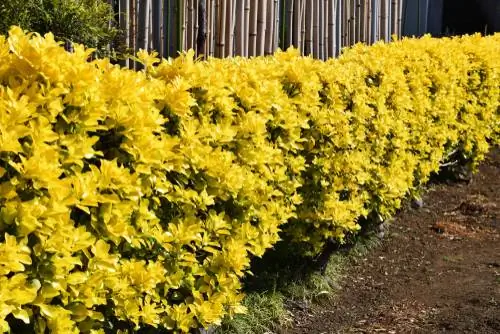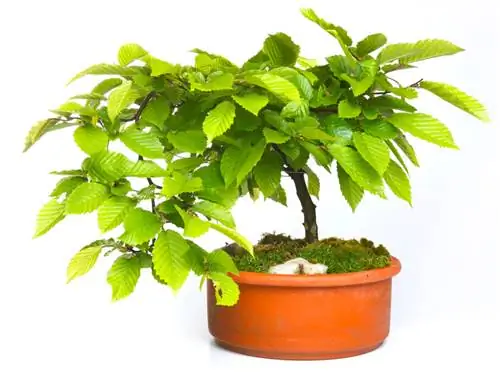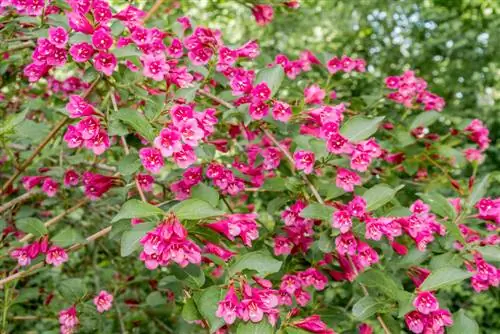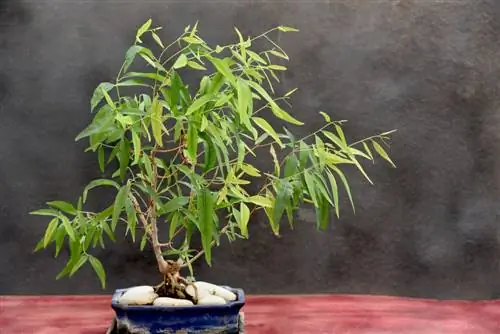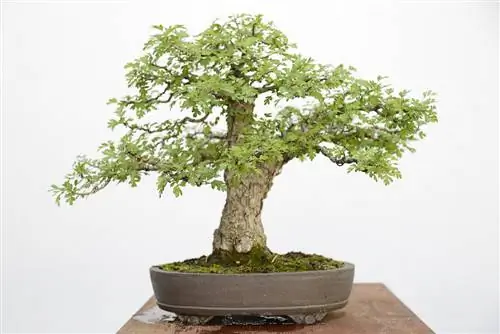- Author admin [email protected].
- Public 2023-12-16 16:46.
- Last modified 2025-01-23 11:22.
Pfaffenhütchen enrich every hedge because they not only impress with their eye-catching fruit decorations. In autumn they light up the garden with golden yellow and crimson leaves. Not all species are suitable for hedge design. Proper pruning measures are important.
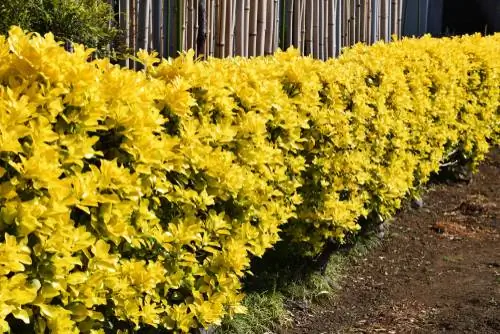
Which Pfaffenhütchen species are suitable for hedges?
For hedges, Euonymus fortunei is suitable as a knee-high, decorative hedge and Euonymus europaeus is suitable for taller privacy hedges. Both species tolerate pruning and bring aesthetic accents to the garden with eye-catching fruits and autumn foliage colors.
Euonymus fortunei
This creeping spindle is also known as a climbing spindle bush. Their shoots are creeping to ascending. They are suitable as ground cover and can be used to create hedges. Varieties with yellow-green variegated leaves are particularly aesthetic. Because of their low growth height, creeping spindles can only be formed into knee-high hedges.
Euonymus europaeus
The common Pfaffenhütchen is native to Central Europe and grows naturally as a two to four meter high shrub. The tree is popular in natural gardens, but also in public parks, because of its eye-catching fruits. This spindle bush is very suitable for creating privacy hedges. It can be brought into shape through pruning measures and can also tolerate radical pruning. The shrub looks particularly aesthetic in mixed hedges when the leaves change color in autumn.
The ideal location for Pfaffenhütchen:
- direct sun or partial shade
- warm conditions
- high permeability
- humous soil
hedge cutting
Pfaffenhütchen can be kept in shape during the growing season. Radical pruning is only permitted at certain times so that you do not disturb breeding birds. In spring, remove troublesome and diseased branches at their base. The shrub develops new shoots around the interface so that it grows ever denser.
Cutting tips:
- Tighten the cords so as not to lose sight of the hedge shape
- cut and thin regularly at a young age
- free branches that are rubbing against each other
Preventing diseases
The Pfaffenhütchen is susceptible to mildew and rust fungi. The spores spread preferentially in damp weather. A film of water droplets on the leaves promotes the spread of the microscopic spore powder. To prevent an infestation, you should regularly spray the bushes with plant decoctions made from field horsetail and nettle. This strengthens the plants and makes them more resistant to fungal attack. Water the bushes at the base of the trunk to prevent a wet microclimate from developing between the leaves.

